Legendary amplifiers - historical “anatomy” of trends: reflections on quality, prices and trends
Over the past 60 years, the ideas of developers and consumers about what a good UMZCH has changed have been many times over. However, amplifiers periodically appeared, which, thanks to circuit design and design solutions, remained in history as symbols of their era, as quality standards, as devices that predetermined the development of entire areas.
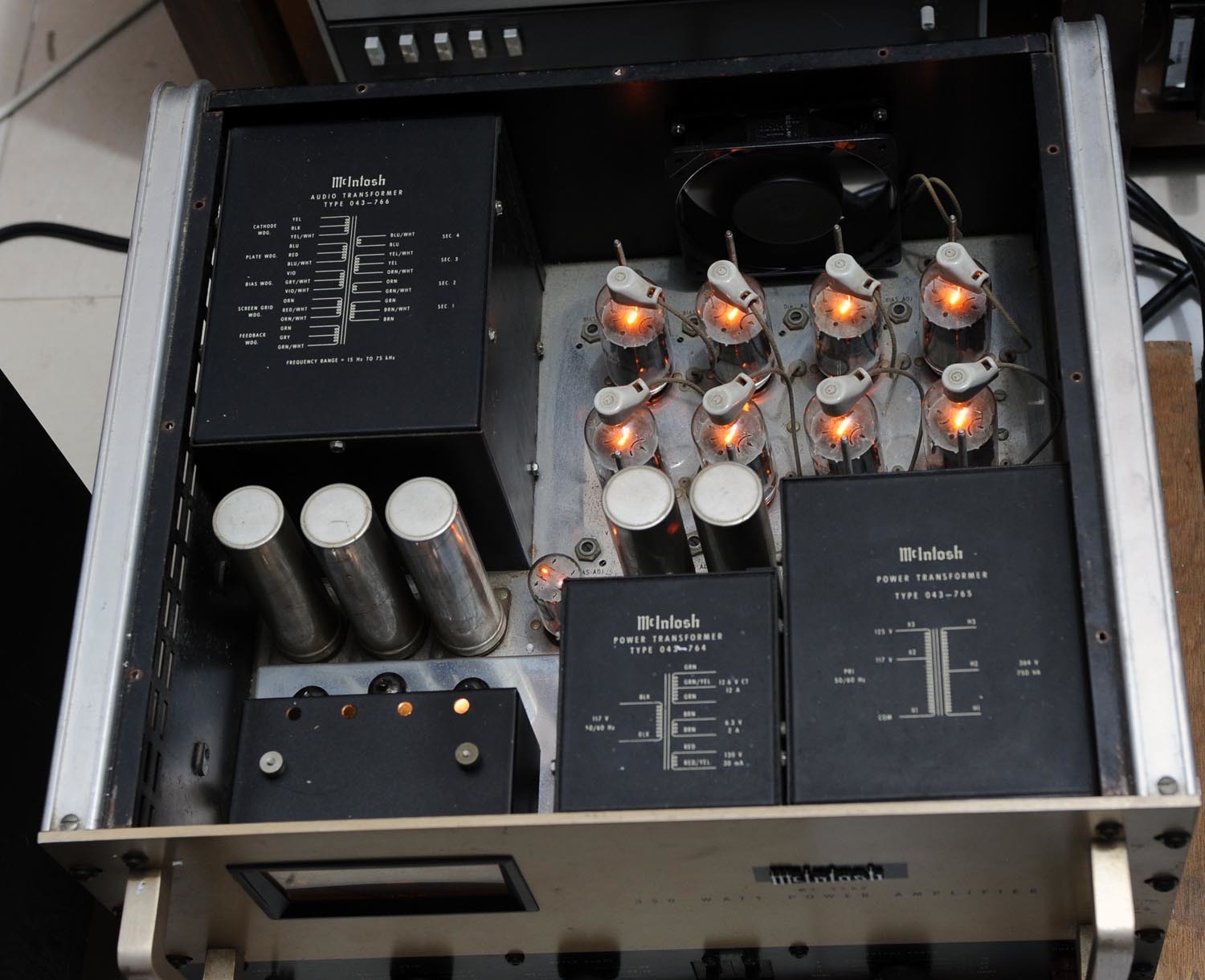
Analyzing the history of the emergence of the so-called cult UMZCH, for a long time we can note several interesting phenomena. I will tell you about some of this material, which, with a positive user rating, will be the first in a new cycle of posts. Today we will understand c expensive and not very high-end, so from what it grew, what it was, and what it became.
')
As a basis for the material, I took reviews of people like: Peter Breuninger, Dick Alcher, Harry Pearson, and others, as well as a number of publications reflecting the historical significance of devices and the development of certain brands. As it turned out, in spite of some discrepancies, the authors' conclusions about the "cult" and the historical significance of many well-known amplifiers are quite correlated.
Already at the stage of analyzing sources, I came across the following: magazines for audiophiles and sympathizers, when it comes to a mass and inexpensive device, the price of the device is not indicated. At the same time, if the component was worth several tens of kilobaksov at the moment of appearance on the windows, the price is mentioned almost immediately and attention is paid to it (indicating that this price tag was in a certain year, and this taking into account the inflation of the dollar et setera).
I decided to fill these gaps, and found the cost of some devices that were not included in the reviews of experienced sound scientists. Another point, it is connected with the fact that the audio press of the 70s - 90s did not bother, as unnecessary, apparently, an indication of the exact characteristics of the devices about which she wrote.
This revolutionary product, for its time, was developed by American sound engineer David Hafler. In 1954, Huffler, with another famous hi-fi father, designer Ed Laurent, founded the company Dynaco in Philadelphia. By 1959, the serial production of the ST 70 tube amplifier was set up, which, in a cheaper version (“Dynakit”), was intended for self-assembly.
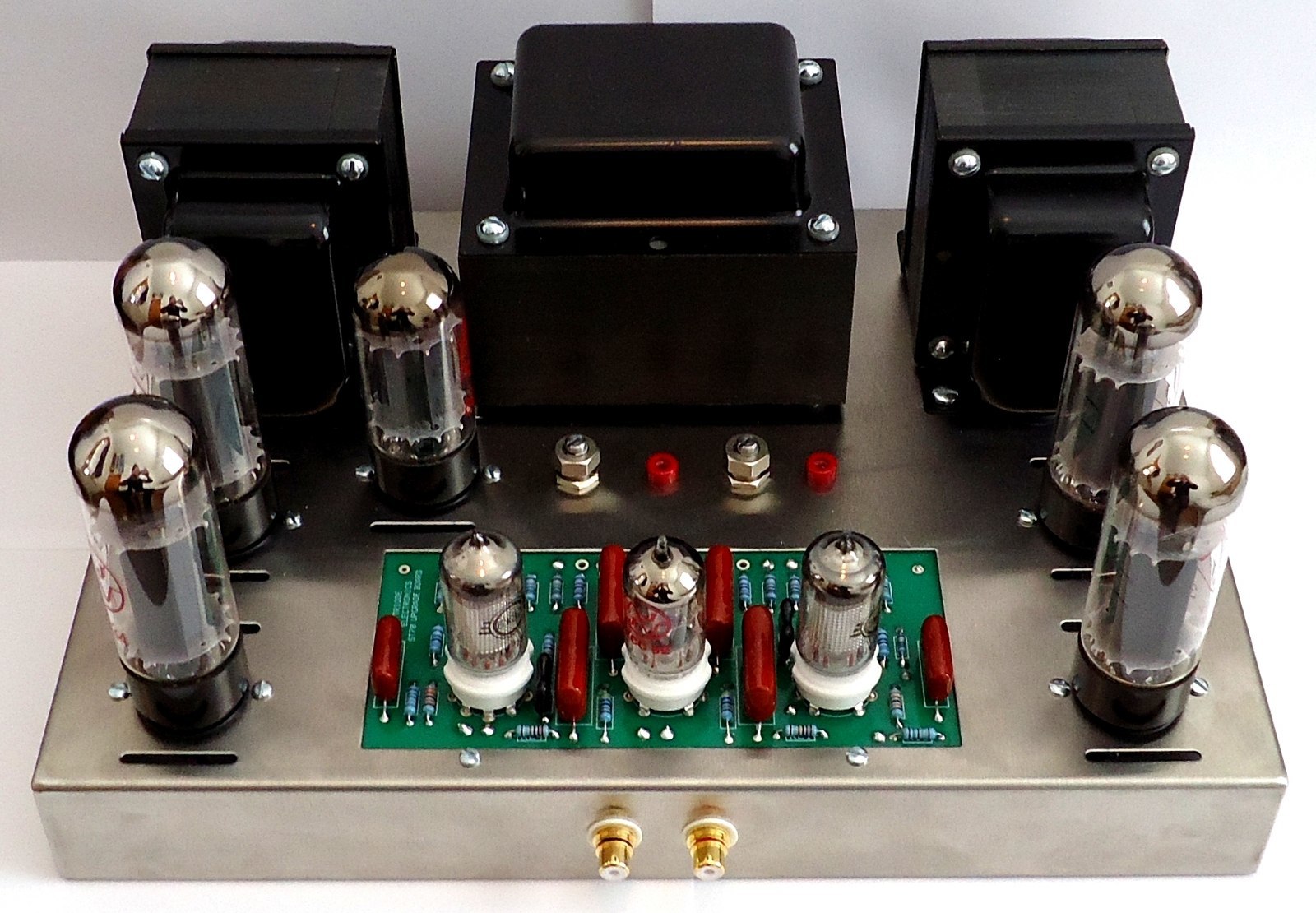
The uncomplicated and efficient circuit design of the audiophile designer assumed the use of four EL34 lamps, one GZ34 / 5AR4 and two 7199. The impressive design of the amplifier was developed by Ed Laurent and Bob Tucker, who used nickel plating of the cabinet surfaces for shielding. This feature has a positive effect on the aesthetics of the device.
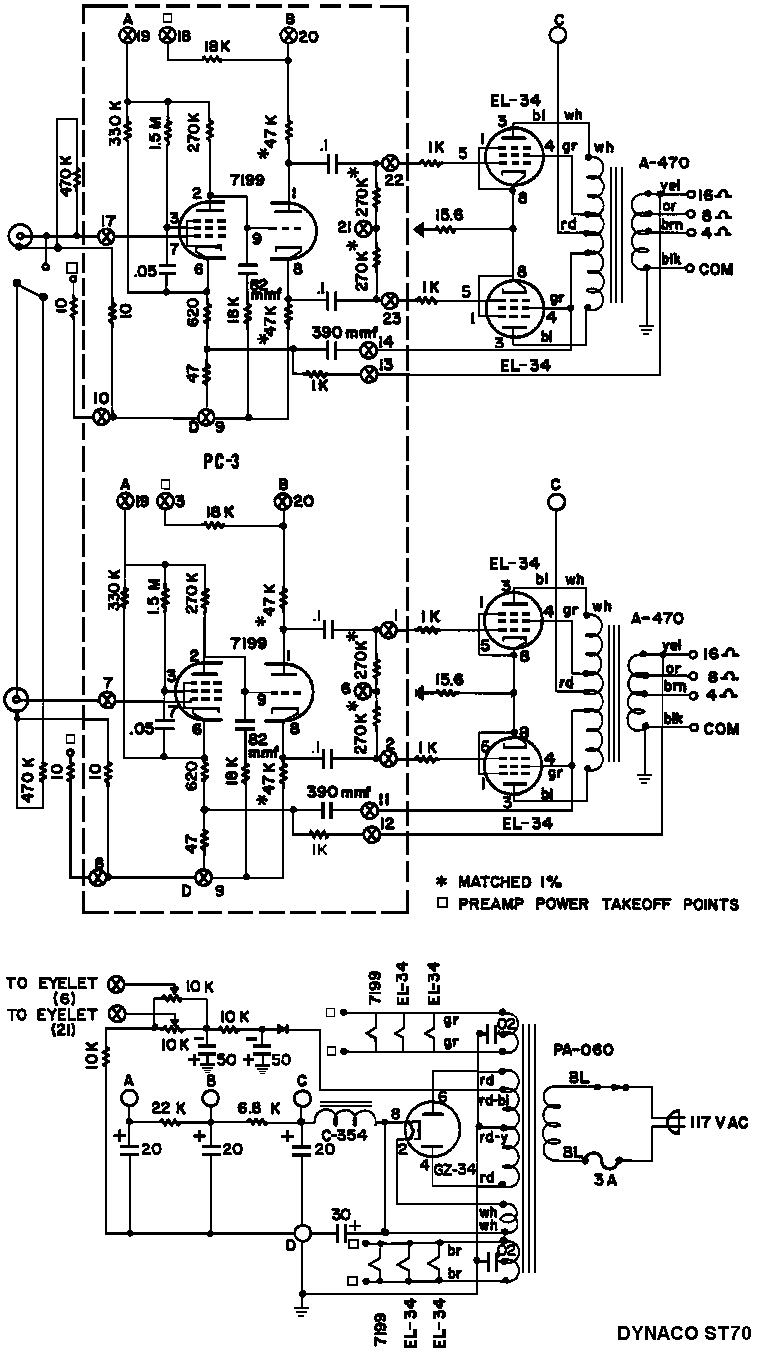
The cost of a set to create an amplifier was relatively small and did not exceed $ 99, 95, the assembled amplifier cost a little more, about $ 130. The most surprising characteristics of this product were almost unreal for that time, with a relatively low price:
The cost of the amplifier ($ 100- $ 130) was decent enough for 1959, but quite feasible for a representative of the American middle class. With inflation, it's about $ 820 - $ 1000 today. It should be noted that devices similar in their characteristics, and in some respects inferior to it, cost about $ 500- $ 800 at that time, i.e., about $ 4,100 - $ 6,500. It is because of this difference that this amplifier began to be called McIntosh for the poor, and later Hi-endamp for deadbeat.
It is clear that today you can find an amplifier with similar characteristics and for $ 820 and for less money. But it should be understood that quite a long time has passed for these parameters to become ordinary. And yet, the lamp - is already not enough, the “warm” lamp watts are painfully expensive now. At the same time, 350,000 copies of the ST-70 were sold during production, which is the quantity that does not have equal for the release period of this device (1959-1970).
Today, McIntosh MC-3500 is the dream of many music lovers and audiophiles nostalgic for the 60th. Chroniclers of audio, he counted among the so-called True Hi-end. At the same time, the titled UMZCH began its journey not at all in the showrooms of expensive audio stores and not in personal studios for listening to music.
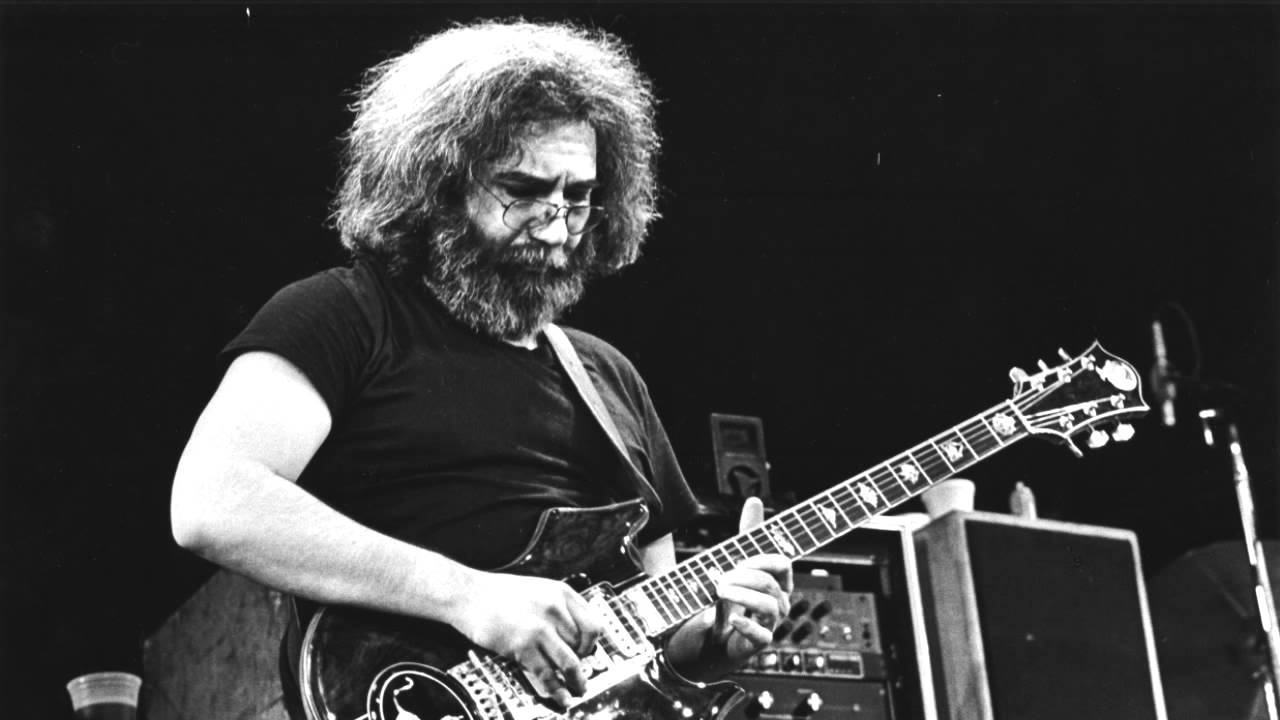
McIntosh MC-3500 was the workhorse of serious concert venues, rehearsal bases and recording studios. This device was initially positioned as a professional technician and only 3-4 years after gaining the reputation of an unkillable and excellent sounding amplifier for pros, it was “adopted” by audiophiles.
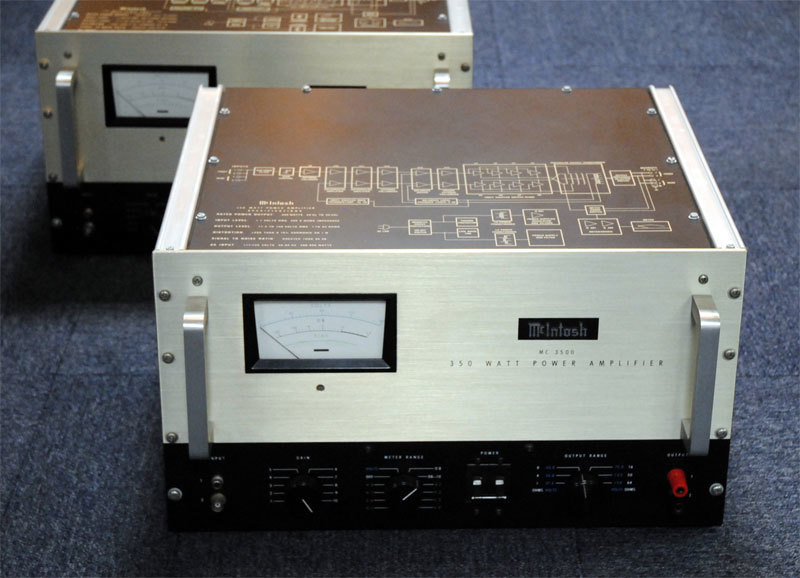
Like most of the technology of its time (year 1968) McIntosh MC-3500 was a tube. The characteristics of the device met the requirements of the best concert venues and studios of the time:
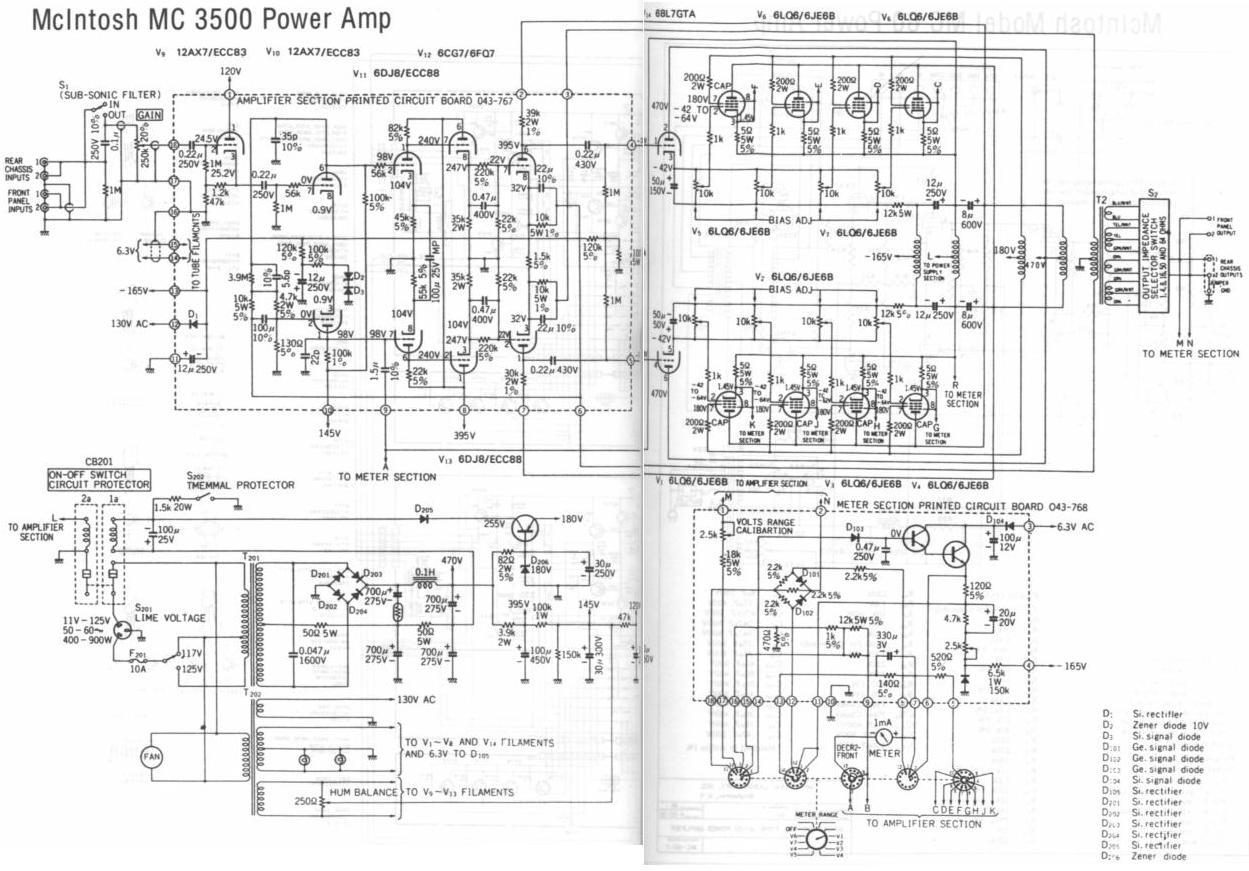
Interestingly, it was these monoblock amplifiers that used the legends of psychedelic rock, the Grateful Dead band. Perhaps that is why those amplifiers, which cost 60s - $ 4,000 (equivalent to $ 25,744 in 2017) per pair, are now sold at auctions at prices ranging from $ 20,000 to $ 60,000 for one candy bar.
What can appear when a very good engineer who opened a very pretentious company (Great American Sound), in a very pretentious time (70s of the last century), creates a very pretentious product? That's right, the stereo amplifier is Ampzilla II, a very good amplifier, at a price that can be easily lifted for the middle class: $ 629 (which is equivalent to $ 2,608 today) and unprecedentedly pathetic advertising.
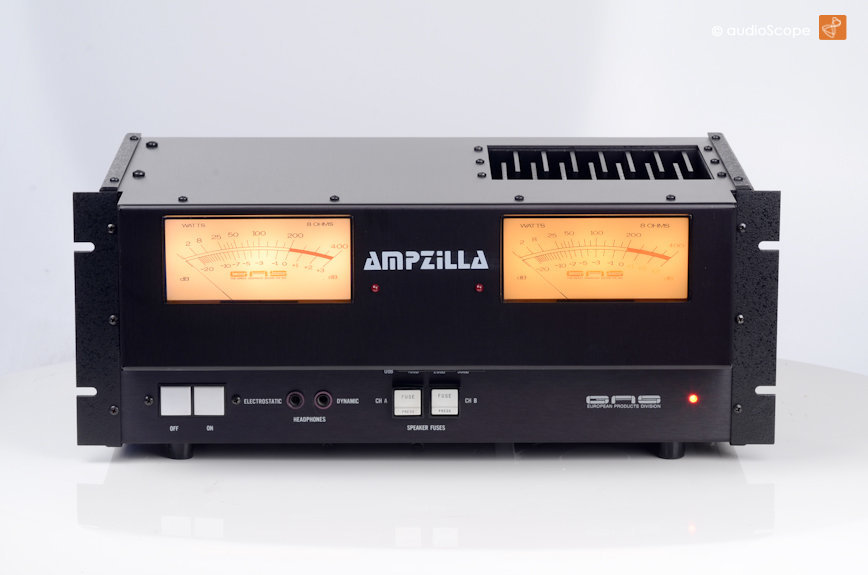
It is worth noting that this amplifier is worth its money, as its characteristics eloquently indicate, without pompous advertising:
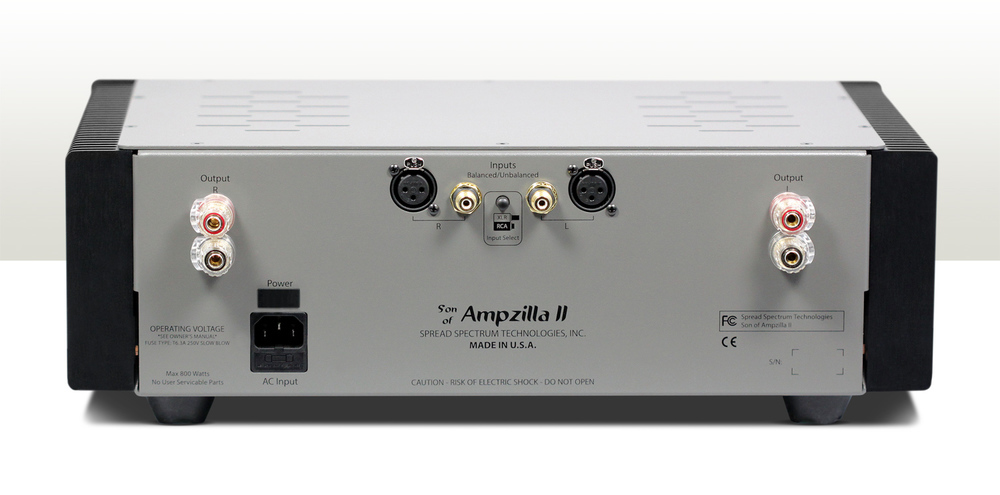
The amplifier was appreciated by his contemporaries, bought a lot, more than 100,000 pieces from 1977 to 1982. Paradoxically, the lamp-orthodox audiophilic criticism (in journals like Stereophile, Pride Audio, etc.) highly appreciated this glaring example of transistor-semiconductor soullessness, with a ridiculous (for the Hi End) price tag, noting in particular:
I especially liked the emotional tension.
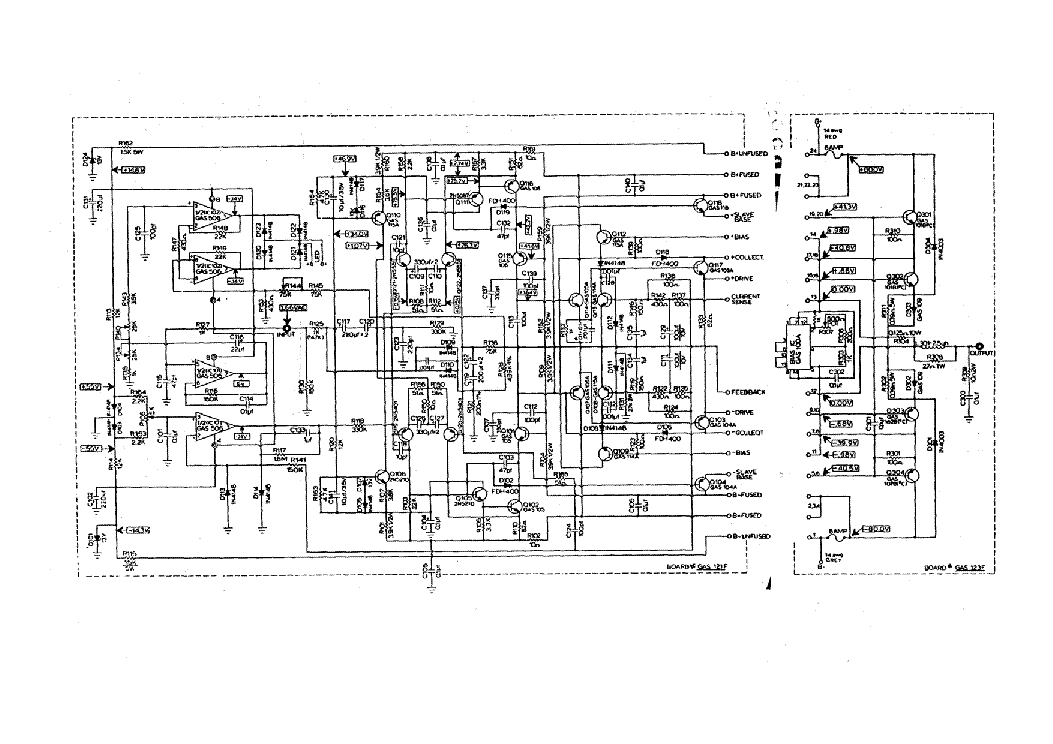
I deliberately will not dwell on several stages of thedegradation of the evolution of the Highland in the 80s, 90s and zero (if there is a cycle, we will certainly return to them). I will miss this long transitional stage so that you can feel the contrast between what you did and appreciated then, and what you do and appreciate now.
Lyrical digression. I am not sick of retrograde, I do not pray for vintage, I love and respect progress. I will not, with the appearance of an elder who is wisely experienced, talk about "how cool it was" when I was gone, no. But I want readers to note the dominant concepts, in which devices are made that are recognized as cult (then - cult, and now - "cult"). And so, ready? Drumroll…
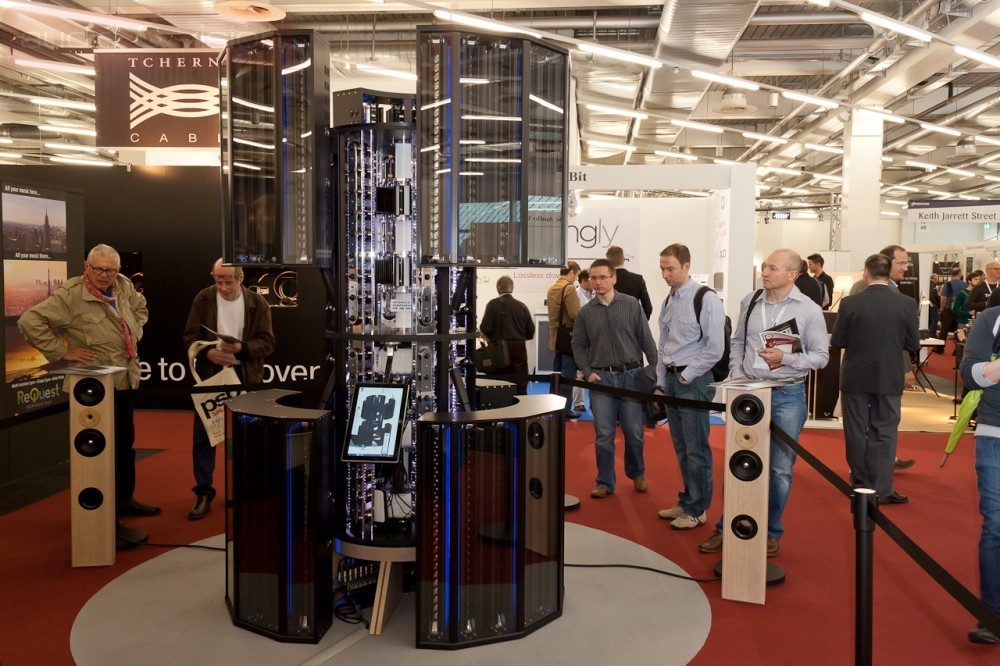
The significance of a certain product for a generation, to some extent, indirectly indicates its priorities, its values. Of course, today there are a great many devices, the significance of which will say a lot of good things to our descendants about us. But from something it seems to me that in the sound equipment of such devices is negligible. It seems that people who appreciated the sound in the 70s, 60s, were many times smarter than those who today with a dull, pathetic look and snobbish contempt, says to others: “What you understand is the sound that costs 100 / 500 thousand bucks. " I want the evaluation criteria to be different. But this, of course, lyrics.
Analyzing the history of the emergence of the so-called cult UMZCH, for a long time we can note several interesting phenomena. I will tell you about some of this material, which, with a positive user rating, will be the first in a new cycle of posts. Today we will understand c expensive and not very high-end, so from what it grew, what it was, and what it became.
')
As a basis for the material, I took reviews of people like: Peter Breuninger, Dick Alcher, Harry Pearson, and others, as well as a number of publications reflecting the historical significance of devices and the development of certain brands. As it turned out, in spite of some discrepancies, the authors' conclusions about the "cult" and the historical significance of many well-known amplifiers are quite correlated.
Eloquent silence
Already at the stage of analyzing sources, I came across the following: magazines for audiophiles and sympathizers, when it comes to a mass and inexpensive device, the price of the device is not indicated. At the same time, if the component was worth several tens of kilobaksov at the moment of appearance on the windows, the price is mentioned almost immediately and attention is paid to it (indicating that this price tag was in a certain year, and this taking into account the inflation of the dollar et setera).
I decided to fill these gaps, and found the cost of some devices that were not included in the reviews of experienced sound scientists. Another point, it is connected with the fact that the audio press of the 70s - 90s did not bother, as unnecessary, apparently, an indication of the exact characteristics of the devices about which she wrote.
Dynakit (Dynaco ST-70) - DIY audio constructor
This revolutionary product, for its time, was developed by American sound engineer David Hafler. In 1954, Huffler, with another famous hi-fi father, designer Ed Laurent, founded the company Dynaco in Philadelphia. By 1959, the serial production of the ST 70 tube amplifier was set up, which, in a cheaper version (“Dynakit”), was intended for self-assembly.

The uncomplicated and efficient circuit design of the audiophile designer assumed the use of four EL34 lamps, one GZ34 / 5AR4 and two 7199. The impressive design of the amplifier was developed by Ed Laurent and Bob Tucker, who used nickel plating of the cabinet surfaces for shielding. This feature has a positive effect on the aesthetics of the device.

The cost of a set to create an amplifier was relatively small and did not exceed $ 99, 95, the assembled amplifier cost a little more, about $ 130. The most surprising characteristics of this product were almost unreal for that time, with a relatively low price:
RMS - 35 W (PMPO: 80 W)
Response - 10 Hz ~ 40 kHz at ± 0.5 dB.
Total THD - less than 1%. (20 Hz ~ 20kHz, with 35 W & with 1 dB)
IM Distortion - less than 1% with 35 W & less than 0.05% with 1 W.
Distortion Noise & hum: 90 dB with RMS.
Output impedance - 4, 8 and 16 Ohm.
Damping factor:> 250 @ 20Hz to 1KHz
The cost of the amplifier ($ 100- $ 130) was decent enough for 1959, but quite feasible for a representative of the American middle class. With inflation, it's about $ 820 - $ 1000 today. It should be noted that devices similar in their characteristics, and in some respects inferior to it, cost about $ 500- $ 800 at that time, i.e., about $ 4,100 - $ 6,500. It is because of this difference that this amplifier began to be called McIntosh for the poor, and later Hi-endamp for deadbeat.
It is clear that today you can find an amplifier with similar characteristics and for $ 820 and for less money. But it should be understood that quite a long time has passed for these parameters to become ordinary. And yet, the lamp - is already not enough, the “warm” lamp watts are painfully expensive now. At the same time, 350,000 copies of the ST-70 were sold during production, which is the quantity that does not have equal for the release period of this device (1959-1970).
Concert mackintosh grateful dead or "warm" tube psychedelic
Today, McIntosh MC-3500 is the dream of many music lovers and audiophiles nostalgic for the 60th. Chroniclers of audio, he counted among the so-called True Hi-end. At the same time, the titled UMZCH began its journey not at all in the showrooms of expensive audio stores and not in personal studios for listening to music.

McIntosh MC-3500 was the workhorse of serious concert venues, rehearsal bases and recording studios. This device was initially positioned as a professional technician and only 3-4 years after gaining the reputation of an unkillable and excellent sounding amplifier for pros, it was “adopted” by audiophiles.

Like most of the technology of its time (year 1968) McIntosh MC-3500 was a tube. The characteristics of the device met the requirements of the best concert venues and studios of the time:
RMS - 350W (PMPO: 870 W)
Response - 20-20kHz (+0-0.5dB)
Total THD - 0.15%. (8 Ohms less than 20 Hz ~ 20kHz, with 35 W & with 1 dB)
IM Distortion - less than 0.9% with 350 W & less than 0.04% with 1 W.
Distortion Noise & hum -95dB.
Output impedance: 1, 4, 8, 16, 50 and 64 Ohms.
Interestingly, it was these monoblock amplifiers that used the legends of psychedelic rock, the Grateful Dead band. Perhaps that is why those amplifiers, which cost 60s - $ 4,000 (equivalent to $ 25,744 in 2017) per pair, are now sold at auctions at prices ranging from $ 20,000 to $ 60,000 for one candy bar.
70's semiconductor standard
What can appear when a very good engineer who opened a very pretentious company (Great American Sound), in a very pretentious time (70s of the last century), creates a very pretentious product? That's right, the stereo amplifier is Ampzilla II, a very good amplifier, at a price that can be easily lifted for the middle class: $ 629 (which is equivalent to $ 2,608 today) and unprecedentedly pathetic advertising.

It is worth noting that this amplifier is worth its money, as its characteristics eloquently indicate, without pompous advertising:
80 W rms @ 8 Ohms @ less than 0.08% 20Hz to 20KHz
150 W rms @ 4 Ohms @ less than 0.02% 20Hz to 20KHz
Response: 20-20kHz (+0-0.5dB)
Total THD & IM Distortion 8 Ohms less than 0.08%
Frequency Response and power bandwidth at rated power 0.5Hz to 20KHz - 0.1 dB @ 8 Ohms
Damping factor:> 500 @ 20Hz to 1KHz
Input sensitivity: 1.0 Volts RMS for full power output
Input Impedance: 75K Ohms
Slew Rate: 40V / uS
Noise:> -100dB

The amplifier was appreciated by his contemporaries, bought a lot, more than 100,000 pieces from 1977 to 1982. Paradoxically, the lamp-orthodox audiophilic criticism (in journals like Stereophile, Pride Audio, etc.) highly appreciated this glaring example of transistor-semiconductor soullessness, with a ridiculous (for the Hi End) price tag, noting in particular:
“Many transistor amplifiers, then and now, demonstrate the presence of impressive technical characteristics, but this is no more than the presence of a sterile dead sound. That is, he lacks emotional tension.
With the Ampzilla II amplifier, this always happens differently. His rhythmic, full of dynamics presentation conquered all music lovers, while music lovers tried to find more details in the high-frequency spectrum. ”
I especially liked the emotional tension.

Toroidal monsters of our day
I deliberately will not dwell on several stages of the
Lyrical digression. I am not sick of retrograde, I do not pray for vintage, I love and respect progress. I will not, with the appearance of an elder who is wisely experienced, talk about "how cool it was" when I was gone, no. But I want readers to note the dominant concepts, in which devices are made that are recognized as cult (then - cult, and now - "cult"). And so, ready? Drumroll…

Title: Opera Only
Weight: 1.5 tons
Status: cult amplifier of the 2000s, the most expensive audio amplifier on the planet.
Creator: industrial designer Andrea Pivett.
Construction: 6 toroidal transformers, each with a power of 30 kW and 2112 bipolar transistors that cool 12 powerful coolers.
RMS Opera Only (mono): 160,000 W (I was not mistaken, just that much)
RMS Opera Only (stereo): 80,000 W (per channel)
Remaining: unpublished, and possibly irrelevant.
Other options:
Practical use:? (I will be glad to see examples in the comments, the creator himself, the secrets of the monster's appointment were not revealed)
Price: $ 2,200,000
Total
The significance of a certain product for a generation, to some extent, indirectly indicates its priorities, its values. Of course, today there are a great many devices, the significance of which will say a lot of good things to our descendants about us. But from something it seems to me that in the sound equipment of such devices is negligible. It seems that people who appreciated the sound in the 70s, 60s, were many times smarter than those who today with a dull, pathetic look and snobbish contempt, says to others: “What you understand is the sound that costs 100 / 500 thousand bucks. " I want the evaluation criteria to be different. But this, of course, lyrics.
Source: https://habr.com/ru/post/370105/
All Articles